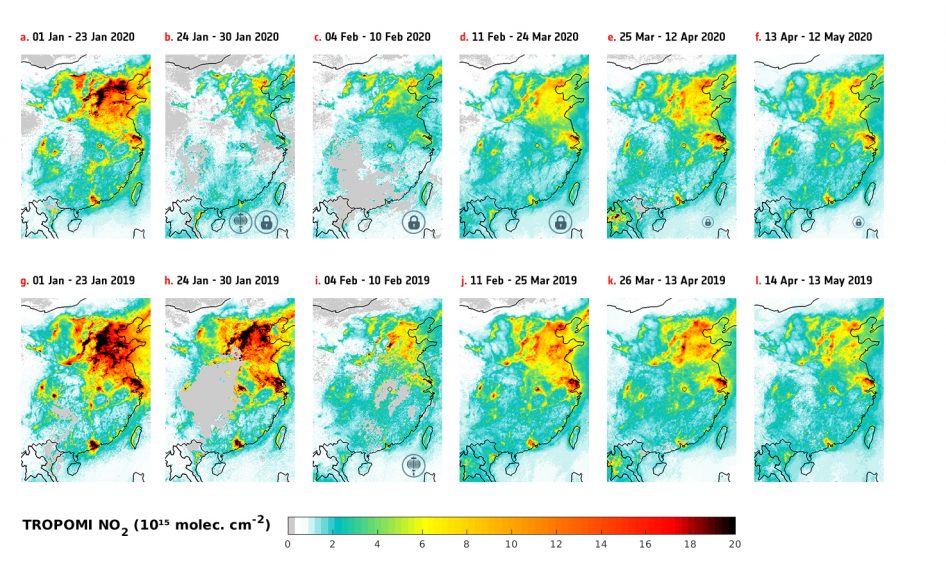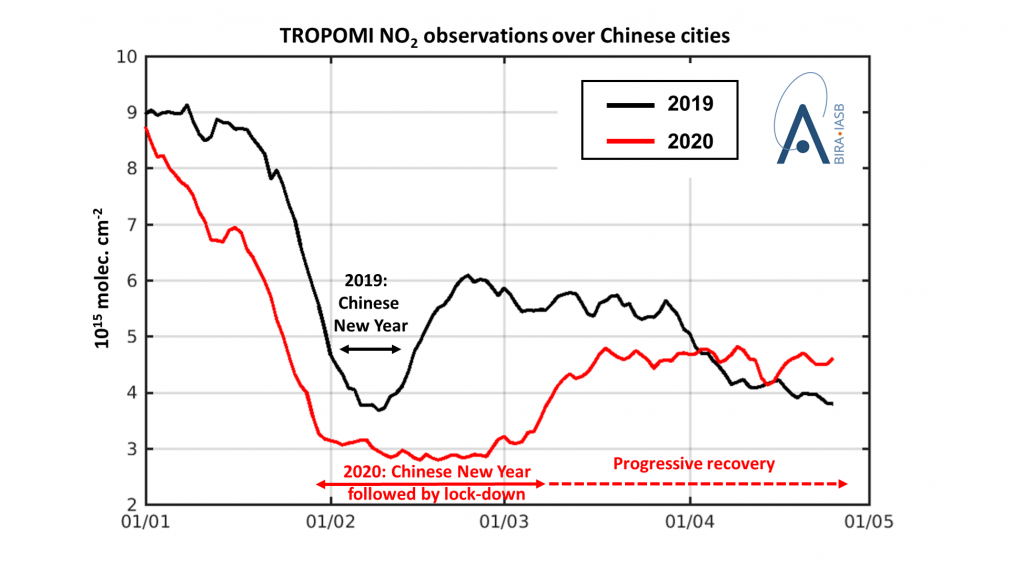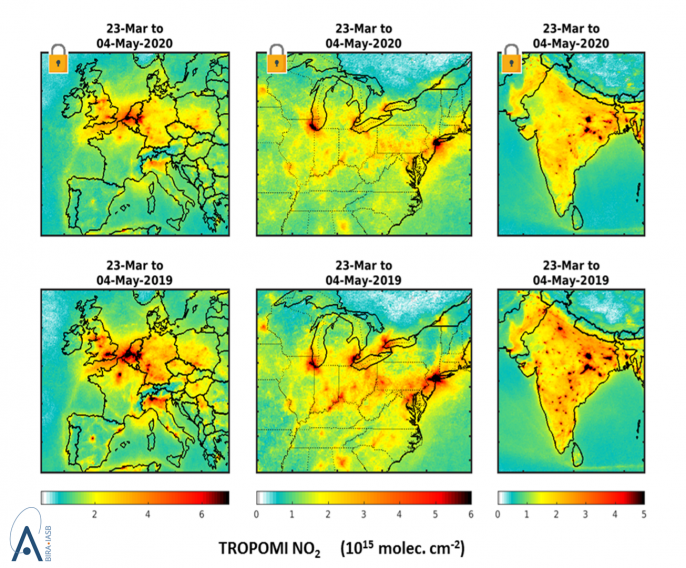All over the world, countries have – to a greater or lesser extent – taken measures to reduce the spread of the coronavirus. In particular, people movements have been restricted worldwide. The decrease in traffic and industrial activity, the two main sources of nitrogen dioxide (NO2) in urban areas, led to unprecedented decreases in NO2 pollution, as evidenced by daily global scale space-borne NO2 observations from the TROPOMI instrument on board ESA Sentinel-5 Precursor satellite.
Now that COVID-19 mitigation measures are being relaxed in many countries, let’s examine the improvement in air quality during last months. Over China, the relaxation of COVID-19 measures brought the NO2 concentrations back to normal levels, as shown in the figure below.


Atmospheric scientists from the Royal Belgian Institute for Space Aeronomy (BIRA-IASB), in collaboration with the Royal Netherlands Meteorological Institute (KNMI) and the European Space Agency (ESA) have determined the extent to which the COVID-19 crisis has had an impact on NO2 pollution. The results were published in Geophysical Research Letters (https://doi.org/10.1029/2020GL087978) in early May 2020.
“As a result of the strict lockdowns enforced in China in February, an abrupt decrease in NO2 pollution of up to 50-70% was observed in many cities, compared to the same period of last year. However, since then, NO2 concentrations have risen again to values slightly higher than last year. Around cities such as Milan, Barcelona and Madrid, TROPOMI observed NO2 columns that are about 30-40% lower than in the same period in 2019’” says Maite Bauwens, leading author of the study. In several Indian cities, sharp reductions of about 50% were observed. In European and North American cities, the reductions were around 20-30%. In the city centres, however, the observed reductions were even higher. “In those countries the NO2 concentrations are still low over most cities, but we expect the loosening of the measures will soon show a similar recovery as seen for Chinese cities ” says Bauwens.

The low NO2 columns observed by TROPOMI are confirmed by independent observations from the OMI instrument, on board the Aura satellite which has been making NO2 observations since 2005. “In this way, we can contrast the recent changes with the long-term evolution over the past 15 years. For some Chinese cities such as Wuhan and Nanjing, the low NO2 levels measured in the midst of the lockdown period are unprecedented”, says Jenny Stavrakou, co-author of the study.
NO2 levels are sensitive to meteorological conditions, such as sunlight, temperature and wind, which can affect the lifetime and the dispersion of the gas in the atmosphere. Emission regulations to improve air quality also lead to long-term declines in NO2 concentrations.
More info
Dr. Maite Bauwens (maite.bauwens@aeronomie.be), Dr. Jenny Stavrakou (jenny@aeronomie.be)
Royal Belgian Institute for Space Aeronomy (BIRA-IASB), Tropospheric Chemistry Modelling group
Dr. Christophe Lerot (Christophe.Lerot@aeronomie.be)
Royal Belgian Institute for Space Aeronomy (BIRA-IASB), UV-Vis DOAS Group
Read more about air pollution in Europe during lockdown.

